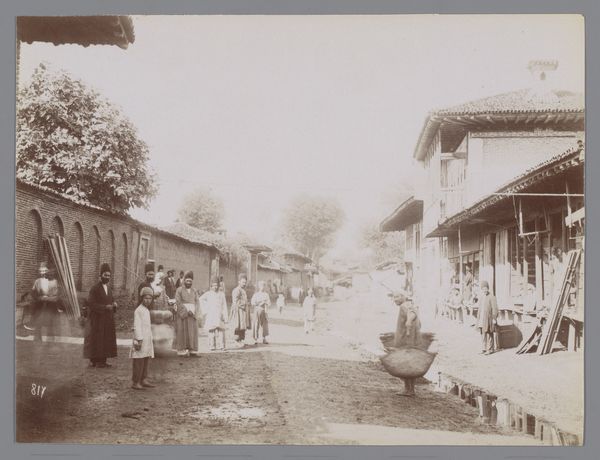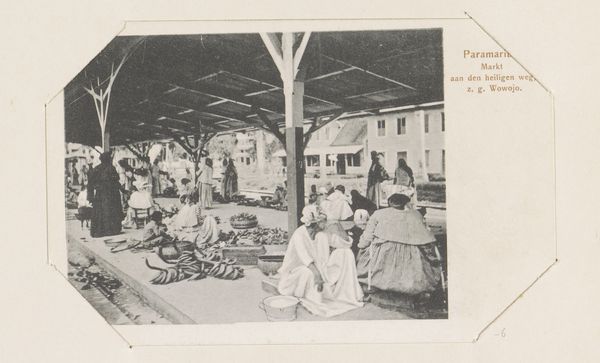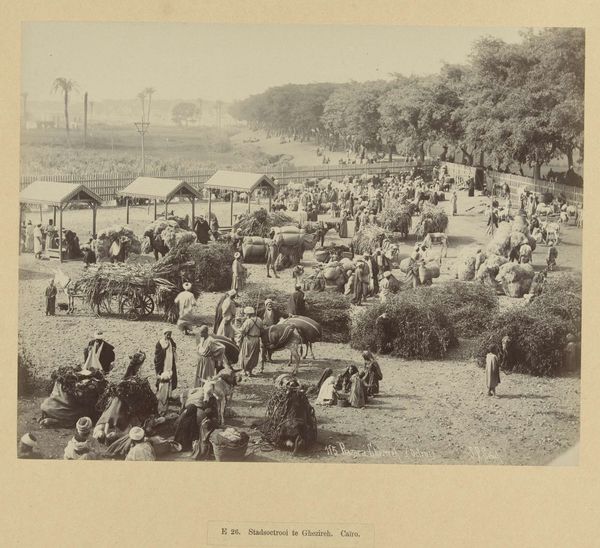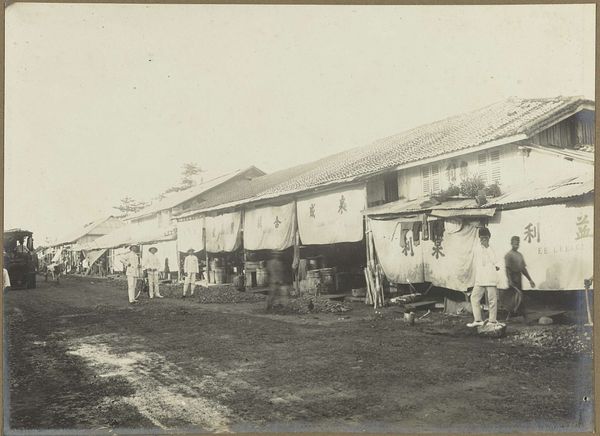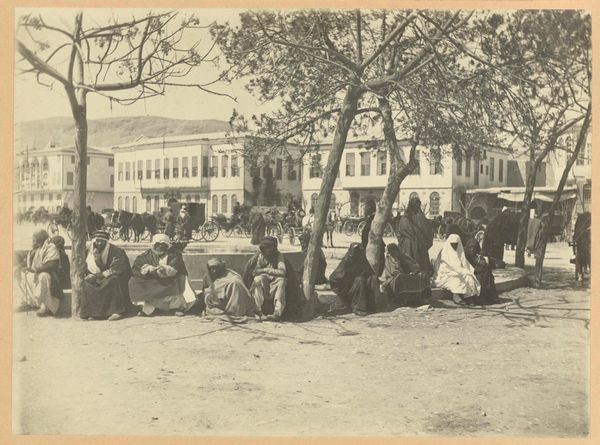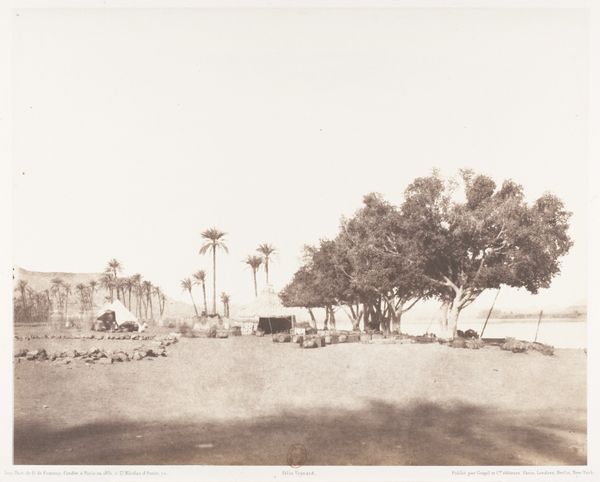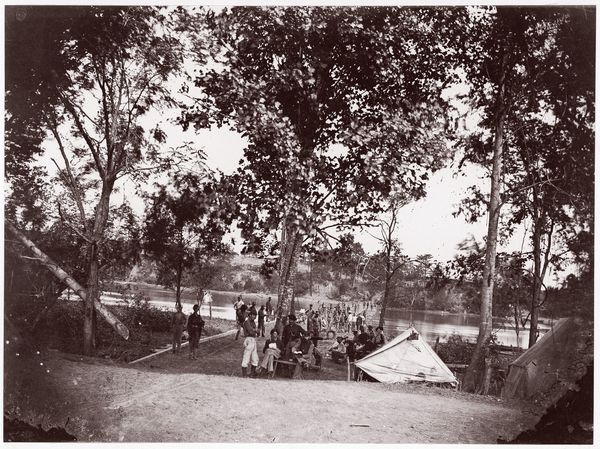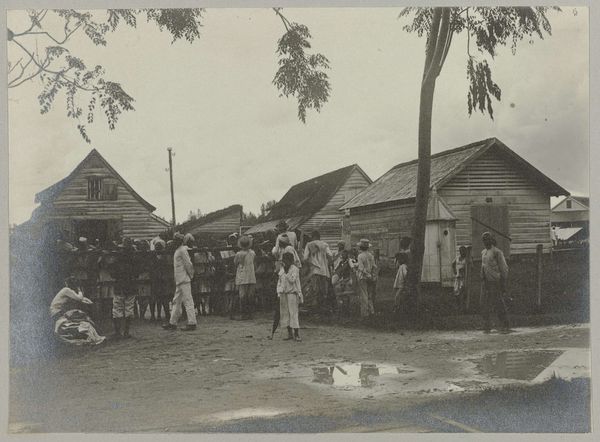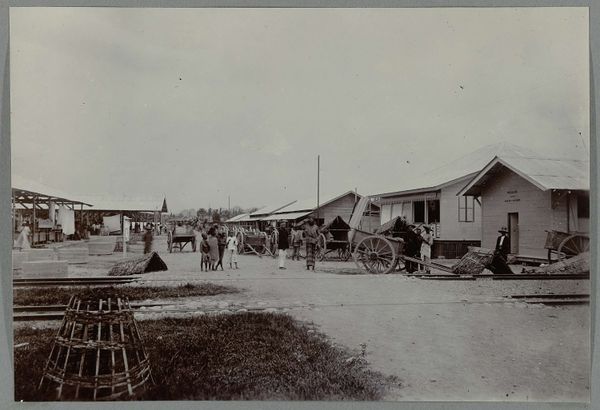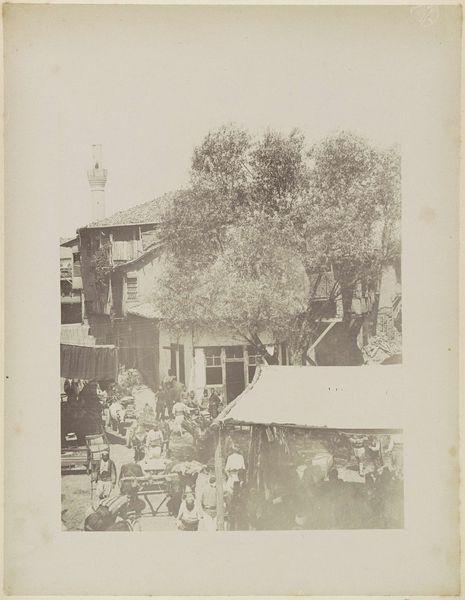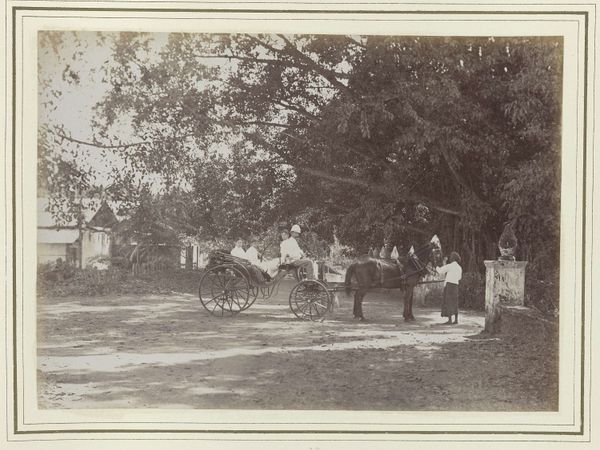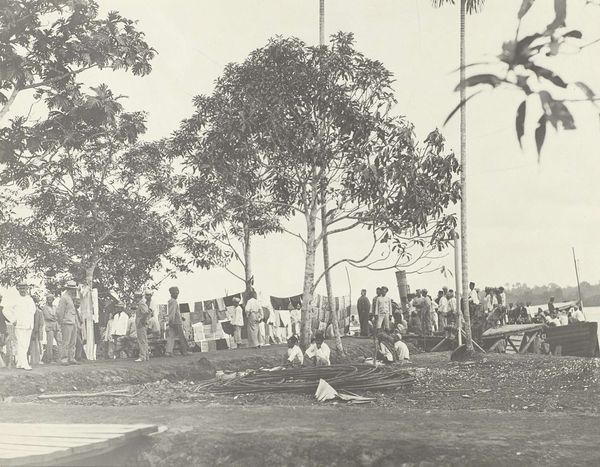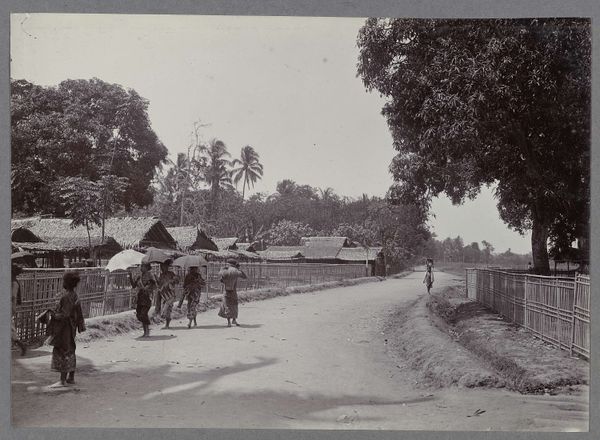
photography
#
print photography
#
landscape
#
street-photography
#
photography
#
orientalism
#
monochrome photography
#
monochrome
Dimensions: height 203 mm, width 274 mm
Copyright: Rijks Museum: Open Domain
Curator: What a compelling image! There's an almost dizzying effect from all the radial sunshades that break up the negative space of the scene. Editor: It's called "Pasar in Bukittinggi," a monochrome photograph, sometime between 1891 and 1912 by Christiaan Benjamin Nieuwenhuis. Currently, it resides here at the Rijksmuseum. To me, it captures a frenetic energy, a feeling of lively exchange that I find rather appealing. Curator: Absolutely. Nieuwenhuis documents what appears to be a thriving marketplace, likely central to the local economy. One can almost imagine the networks and labour supporting this central locale of trade. The parasols, undoubtedly locally made, suggest ingenuity with materials that would’ve been accessible in the late nineteenth, early twentieth century. Editor: Observe how he employs depth of field; the foreground appears sharper, almost gritty, before fading into the densely populated market under the tree. Also, the composition—the low horizon line, allowing for the large tree to occupy much of the upper portion—adds to its depth and, oddly enough, its balance. Curator: True, this work presents an opportunity to consider how such images functioned within the context of colonial-era trade and representation. These ethnographic photographs shaped perceptions of local populations. Consider the conditions under which this photo was commissioned or sold and its relation to local labour and industry. Editor: I do concede there's something romanticizing and possibly even exotifying at play. And yet, that overwhelming canopy, echoed in the repetition of the sunshades—the monochrome unifies this incredibly busy composition into a distinct harmony. It’s as much about form as it is about the marketplace, surely. Curator: Maybe Nieuwenhuis' intention was aesthetic and commercial, but the very act of creating this image also engaged with and transformed the scene and our view. The labour involved in maintaining the market, as well as that to set up the photographic equipment, offers rich areas of investigation. Editor: Yes, but what a beautifully realized scene, with its range of tones and textures all in monochrome. So let’s take this opportunity to see the beautiful interplay between process and artistry, the formal composition, the implied narrative and the impact of colonial dynamics, as we ponder “Pasar in Bukittinggi.” Curator: I'd agree this photograph grants insight into artistic value but also sheds light on economic relations between people and nations, on production and consumption in that era.
Comments
No comments
Be the first to comment and join the conversation on the ultimate creative platform.

